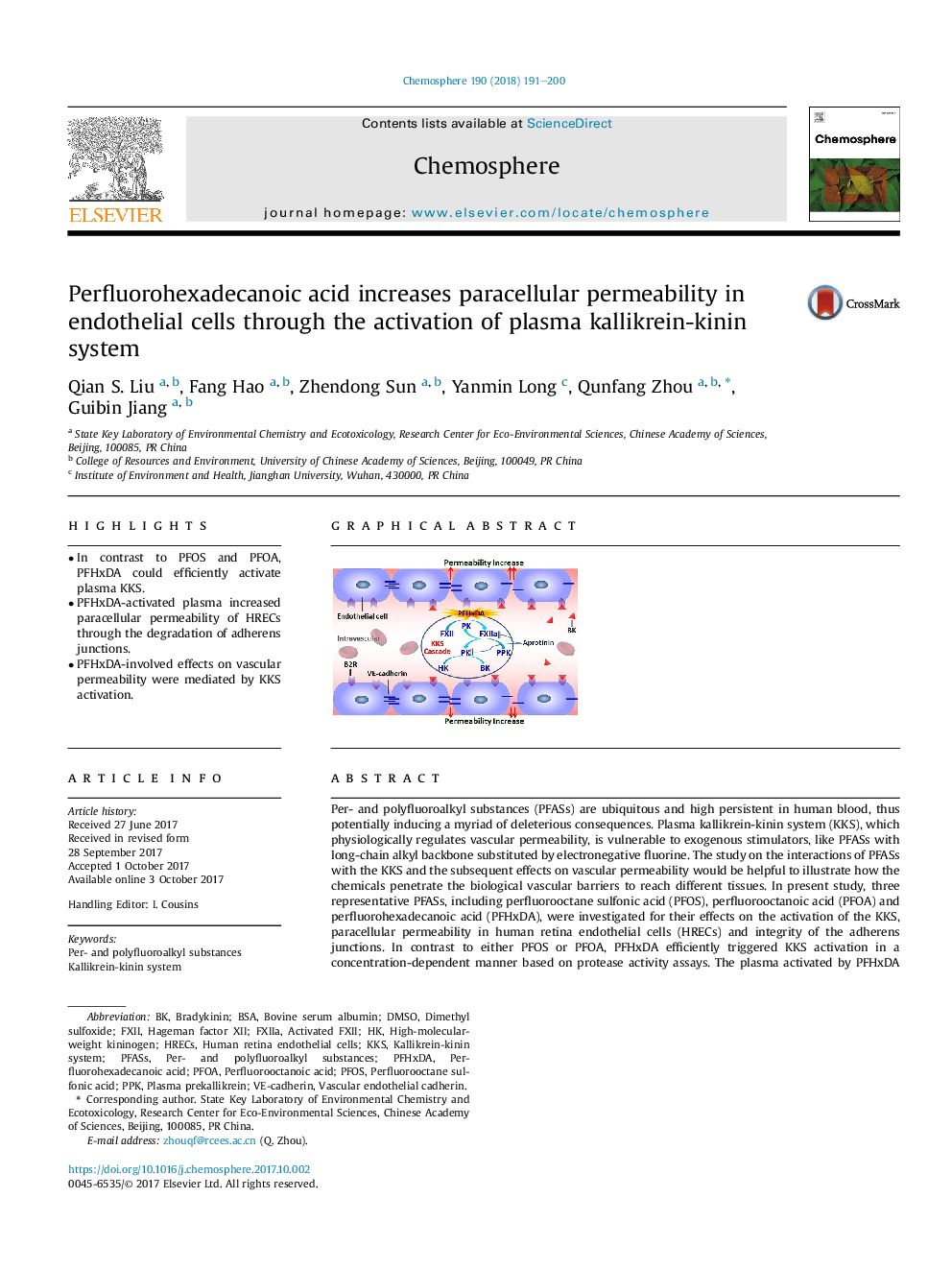| Article ID | Journal | Published Year | Pages | File Type |
|---|---|---|---|---|
| 5745774 | Chemosphere | 2018 | 10 Pages |
â¢In contrast to PFOS and PFOA, PFHxDA could efficiently activate plasma KKS.â¢PFHxDA-activated plasma increased paracellular permeability of HRECs through the degradation of adherens junctions.â¢PFHxDA-involved effects on vascular permeability were mediated by KKS activation.
Per- and polyfluoroalkyl substances (PFASs) are ubiquitous and high persistent in human blood, thus potentially inducing a myriad of deleterious consequences. Plasma kallikrein-kinin system (KKS), which physiologically regulates vascular permeability, is vulnerable to exogenous stimulators, like PFASs with long-chain alkyl backbone substituted by electronegative fluorine. The study on the interactions of PFASs with the KKS and the subsequent effects on vascular permeability would be helpful to illustrate how the chemicals penetrate the biological vascular barriers to reach different tissues. In present study, three representative PFASs, including perfluorooctane sulfonic acid (PFOS), perfluorooctanoic acid (PFOA) and perfluorohexadecanoic acid (PFHxDA), were investigated for their effects on the activation of the KKS, paracellular permeability in human retina endothelial cells (HRECs) and integrity of the adherens junctions. In contrast to either PFOS or PFOA, PFHxDA efficiently triggered KKS activation in a concentration-dependent manner based on protease activity assays. The plasma activated by PFHxDA significantly increased paracellular permeability of HRECs through the degradation of adherens junctions. As evidenced by the antagonistic effect of aprotinin, PFHxDA-involved effects on vascular permeability were mediated by KKS activation. The results herein firstly revealed the mechanistic pathway for PFHxDA induced effects on vascular endothelial cells. Regarding the possible structure-related activities of the chemicals, this finding would be of great help in the risk assessment of PFASs.
Graphical abstractPFHxDA triggered the cascade activation of the KKS in plasma, and subsequently increased the endothelial paracellular permeability through compromising the integrity of the adherens junctions.Download high-res image (293KB)Download full-size image
